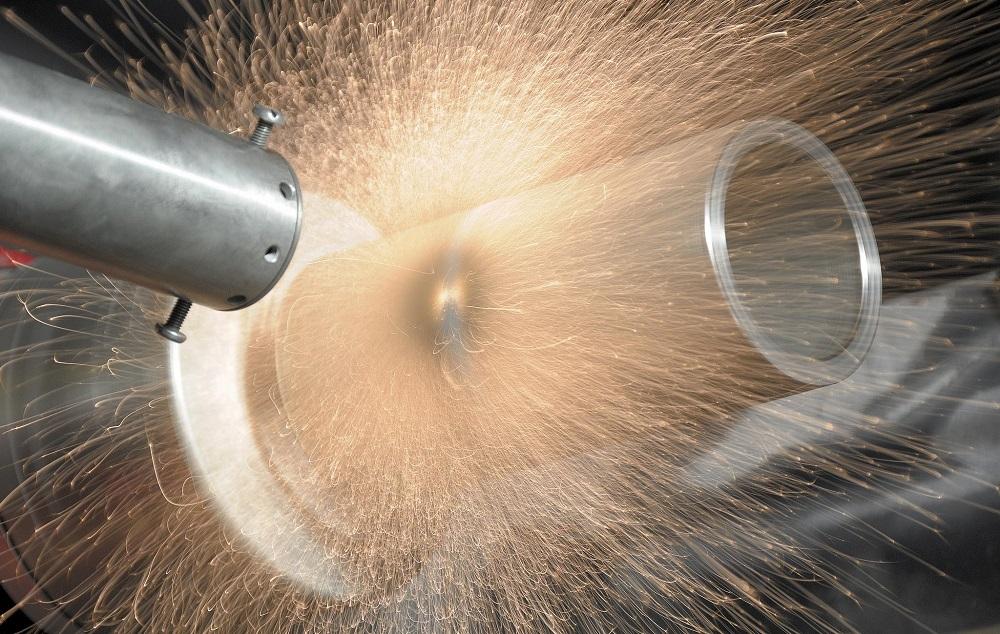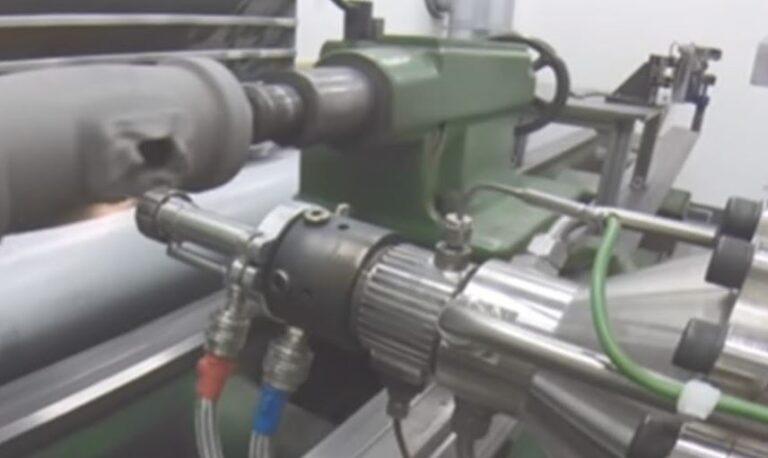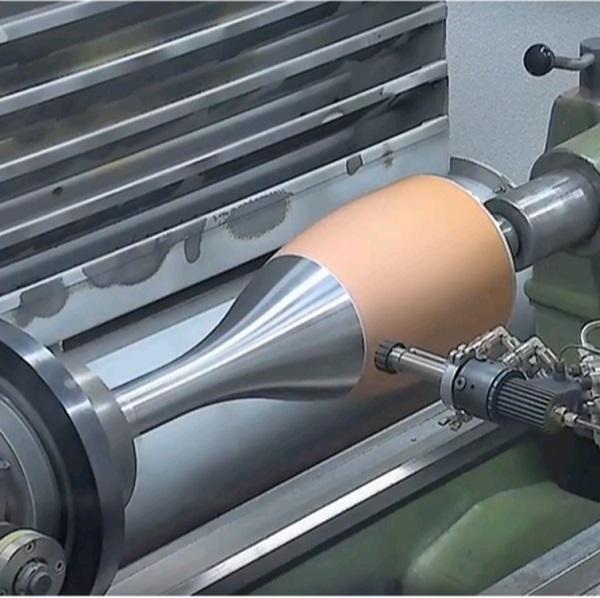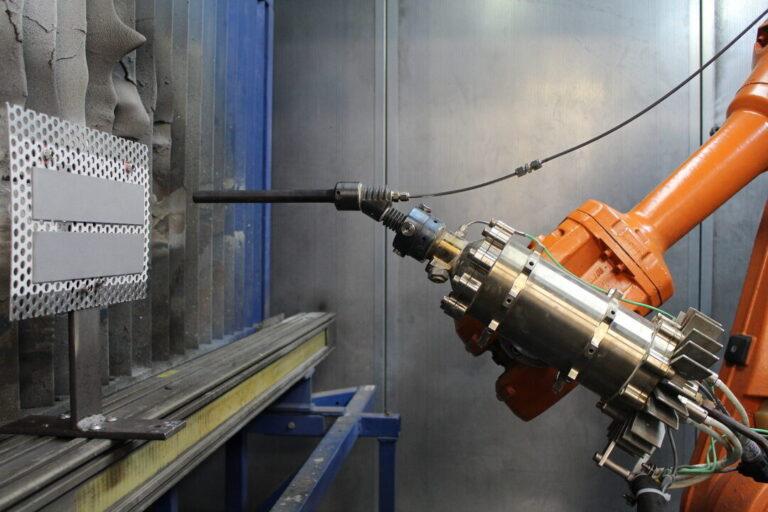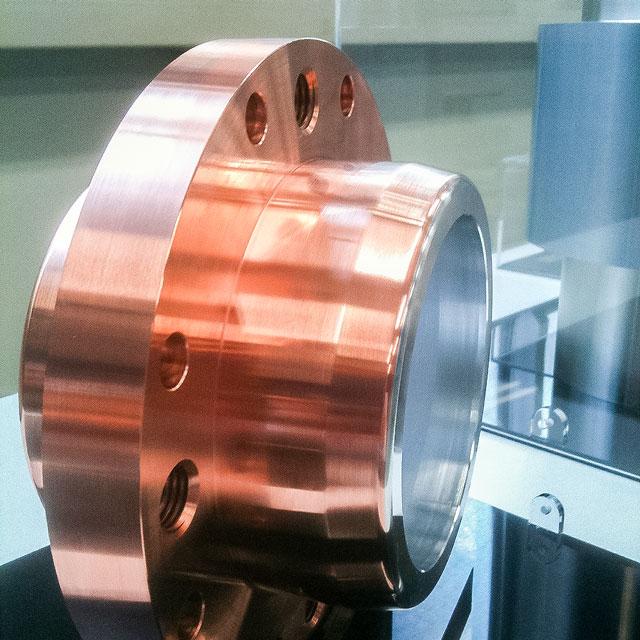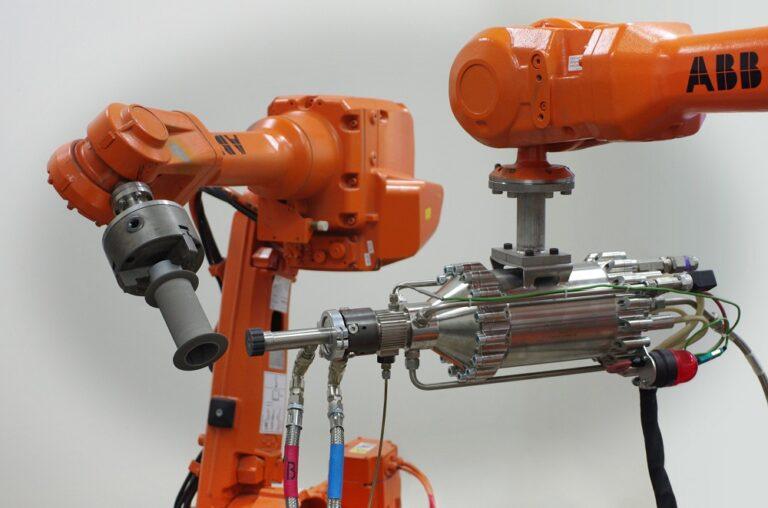What is Cold Spray Technology?
Cold spray technology is a 3D printing process that uses a high-velocity gas stream to deposit particles onto a substrate. The gas is typically heated to a temperature of around 800-900 degrees Celsius, which accelerates the particles to supersonic speeds. When the particles impact the substrate, they bond together, forming a solid object.
The cold spray doesn’t use heat or light to melt or cure material, unlike FDM or SLA. Instead, it uses kinetic energy to bond the particles together. This makes it suitable for printing a wide range of materials, including metals, polymers, and ceramics.
Cold spray produces dense, non-porous parts. This is a key advantage of the technology. This makes them more durable and resistant to corrosion. Additionally, Cold spray prints strong parts with complex shapes, useful in the aerospace and automotive industries.
However, cold spray technology also has its challenges and limitations. The equipment and materials required can be expensive, and the process can be time-consuming. Additionally, cold spray technology has limitations in terms of the size and complexity of the parts that can be printed.
Despite these challenges, cold spray technology has a promising future. As the technology improves and becomes more affordable, it is expected to find new applications in different industries. Additionally, the development of new materials and techniques will expand the capabilities of cold spray technology and enable the printing of more complex and larger parts.
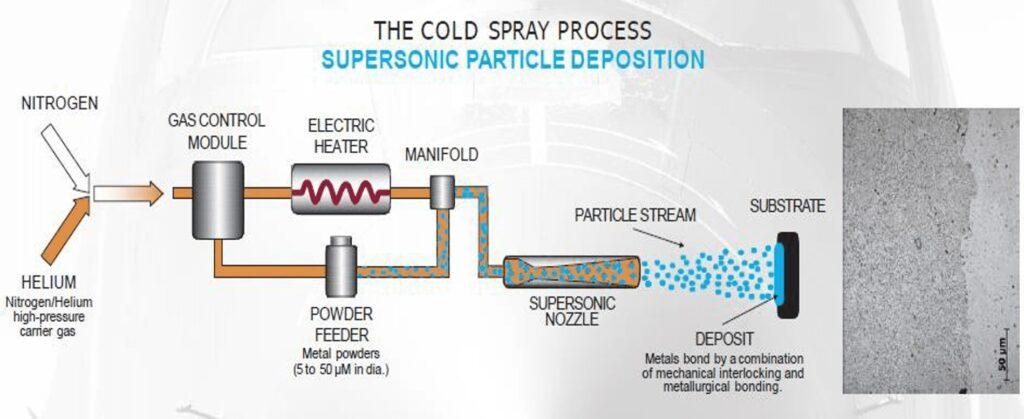
How Does the cold spray process Work?
Feeding small particles into a high-pressure gas stream during the cold spray process entails using materials like metal or ceramic. Around 800-900 degrees Celsius are reached as the gas is heated, and it is then accelerated through a supersonic nozzle. As a result, a gas stream moving at a high speed is produced, carrying the particles to the substrate. The particles deform and join together upon impact to create a solid entity.
Unlike other 3D printing techniques, the cold spray process does not rely on heat or light to melt or cure the material. Instead, the particles are joined together via kinetic energy. This makes a variety of materials, including some that are heat-sensitive or challenging to melt using other techniques, viable for printing.
Specialized equipment, such as a high-pressure gas source, a powder feeder, and a supersonic nozzle, are frequently needed for the cold spray process. Compressed air or an inert gas, such as nitrogen or argon, can be used as the gas source. The gas stream is fed with fine particles from the powder feeder and is accelerated to supersonic speeds by the supersonic nozzle.
In general, the cold spray process is a flexible and cutting-edge 3D printing technique that is being employed in a wide range of industries. It is a desirable solution for numerous manufacturing applications due to its exceptional capacity to print a wide variety of materials with high density and low porosity.
Advantages of the cold spray process
Comparing the cold spray technique to other 3D printing processes reveals various benefits. The ability to create parts with high density and low porosity, which increases their durability and corrosion resistance, is one of the main advantages.
Furthermore, cold spray technology enables the printing of various materials, such as metals, polymers, and ceramics. This makes it a flexible choice for producing parts with a range of characteristics and functions.
The capability of cold spray technology to print items with intricate geometries and high strength-to-weight ratios is another benefit. Especially in fields like aerospace and automotive, where engineers desire parts with great strength and low weight, this technology is particularly helpful.
Comparing cold spray technology to other 3D printing techniques, it is also a comparatively quick process. Depending on the size and complexity of the part, it can make parts at rates of up to several kilos per hour.
Last but not least, cold spray technology is a low-heat method, allowing for the safe printing of heat-sensitive materials. As a result of this, one can use it to print objects that require precise temperature control or are difficult to print using other techniques.
Overall, the benefits of cold spray technology make it a desirable choice for producing precise, high-quality parts. It is a useful tool for numerous industries because it can print a variety of materials, intricate geometries, and strong pieces.
Applications of Cold Spray process
Cold spray technology has a range of diverse applications across various industries. Aerospace industries utilize it for repairing or manufacturing engine components and structural elements. The automotive industry can use it to print high-strength parts with complex geometries, such as suspension components and brake calipers.
Cold spray technology is used in the medical field to fabricate and repair medical equipment and to create implants and prosthetics. The electronics industry benefits from its use in printing conductive traces and components, such as housing and heat sinks.
The marine industry can use cold spray technology to repair or create parts for ships and submarines. Similarly, the energy industry can use it to repair or create parts for power plants and pipelines.
For example, aerospace companies have used cold spray technology to repair components of aircraft such as landing gear, engine fan blades, and wing skins. Medical professionals have used it to print orthopedic implants, such as hip and knee replacements. Electronic manufacturers have used it to print heat sinks for their electronic devices.
Overall, cold spray technology offers a wide range of applications and has the potential to revolutionize many different industries.
Challenges and Limitations of the cold spray process
Despite its advantages, the cold spray process also has some challenges and limitations. One of the main challenges is the difficulty of controlling the size and shape of the particles, which can affect the final properties of the printed parts.
Another challenge is the need for specialized equipment, which can be expensive and require skilled operators. In addition, the process can be slow for large or complex parts, and the high gas pressures required can create safety concerns.
The cold spray process also has limitations in printing parts with extremely fine features or high surface finish requirements. It can also be difficult to achieve consistent properties across large parts, due to variations in particle distribution and bonding.
Finally, the cold spray process is not suitable for printing parts that require precise temperature control or that are sensitive to heat, as the process relies on kinetic energy rather than heat to bond the particles together.
Overall, the cold spray process has its share of challenges and limitations, but its unique advantages make it a promising 3D printing method for a wide range of applications.
Future of Cold Spray Technology
The cold spray process has a bright future because of ongoing research and development aimed at overcoming its present drawbacks. The technology will be able to print objects with improved accuracy and consistency because of improvements in particle management and deposition procedures.
Furthermore, the range of applications for cold spray technology will increase with the use of new materials like high-temperature alloys and composites. A wider range of companies will be able to afford it as the cost of materials and equipment declines.
To incorporate the advantages of each process, manufacturers can combine the cold spray process with other 3D printing technologies such as powder bed fusion and binder jetting to produce hybrid manufacturing systems.
In general, the cold spray process promises a bright future and can revolutionize the production and repair of components in various sectors.
conclusion
In conclusion, cold spray technology offers many advantages over traditional manufacturing methods, including the ability to print parts with complex geometries, high strength-to-weight ratios, and excellent material properties. While there are some challenges and limitations to the process, ongoing research and development are addressing these issues and expanding the range of applications for cold spray technology.
As the technology continues to evolve, it has the potential to revolutionize the way we manufacture and repair parts in a wide range of industries, from aerospace and automotive to medical and electronics. The future looks promising for cold spray technology, and it will be exciting to see how it develops and transforms manufacturing in the years to come.
How to optimize process parameters for cold spray technology?
- Determine the optimal gas flow rate
Adjust the gas flow rate to achieve the optimal velocity for the powder particles to achieve the desired coating or build-up. This parameter is critical as it impacts the particle’s velocity and temperature.
- Optimize the nozzle standoff distance
Determine the distance between the cold spray nozzle and substrate that gives the best deposition efficiency while avoiding substrate damage.
- Choose the right powder feed rate
Adjust the powder feed rate to achieve optimal deposition efficiency, while avoiding powder buildup or powder accumulation around the nozzle.
- Adjust the process temperature
Optimize the process temperature to control the adhesion strength and microstructure of the cold spray build-up.
- Optimize the gas temperature
Control the gas temperature to control the particle temperature and velocity during deposition, resulting in optimal deposition quality.
- Optimize the particle size and velocity
Select the appropriate particle size and velocity to achieve the desired coating thickness and properties.
- Conduct test runs
Conduct a series of test runs with varying parameters to optimize the process parameters based on the results.
- Monitor the process variables
Continuously monitor the process variables and make adjustments to ensure consistency and quality in the final product.
- Evaluate the final product
Evaluate the final product and make adjustments to the process parameters as necessary to achieve the desired quality and properties.
FAQs
You can use cold spray technology with a variety of materials, including metals, alloys, ceramics, polymers, and composites.
Yes, Cold spray technology does not involve high temperatures that could damage sensitive materials, making it a safe option for use.
Yes, One can scale up cold spray technology for large-scale production, but it may require additional equipment and result in increased operating costs.
Cold spray technology uses high-velocity particles to deposit material onto a surface, while traditional 3D printing typically melts or fuses material together layer by layer.
Industries such as aerospace, automotive, medical, and electronics are using cold spray technology for a variety of applications ranging from repairing and maintaining to fabricating complex parts and components.
Generally, people consider cold spray technology as an environmentally friendly alternative to traditional manufacturing processes because it generates less waste and consumes less energy. However, the environmental impact may vary depending on the specific application and materials used.

